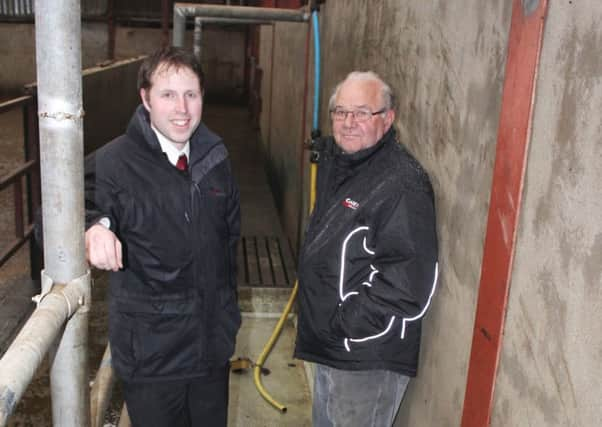Organic milk production requires a commitment to the highest management standards


“White clover features prominently in all our grazed swards, with red clovers included in our silage mixes,” he said,
“We take three cuts of silage each year, which will have an average 20% protein content.
Advertisement
Advertisement
“The grass is ensiled following a 24-hour wilt. The trick in managing red clovers properly is to raise the cutter-bar of the mower an inch above what would normally be the case. This ensures that the growing tip of the clover plants is not cut.
“Red clover populations will remain viable for up to three years. After that, we would go in with a re-seed – as a matter of course.”
The Humphrey herd, comprises 300 cows. It is split 50:50 between autumn and winter calving. The cows, predominantly Friesian/Rotbunt crosses, are currently averaging 7,500L with 1.25t of concentrates fed. Swedish Red bulls are now being used as a third cross option.
“Under Soil Association rules concentrate feeds can only account for between 40% and 60% of total milk output,” said Humphrey.
Advertisement
Advertisement
“We also grow winter wheat for both grain and silage purposes. Grazed grass is a major driver for the business. Our autumn calvers are currently out in the paddock during the daylight hours.”
The Humphrey herd was established in 1999. It is part of the United Irish Organics’ Group.
“We are currently getting 35.5ppl for all our milk. The break-even price is 25p,” he said.
Regular foot bathing is a core component of the management practises followed on the farm.
Advertisement
Advertisement
Rex Humphrey recently invested in a bespoke 900mm wide Moore Concrete footbath. It is now part of a two component system which includes a pre-wash and solution-filled baths.
“The new set-up allows us to put the cows through the foot bathing system as often as we want after they leave the milking parlour. Regular foot bathing is critically important when it comes to preventing lameness.
“A cow that is off her feet will not perform in any sense.”
Moore Concrete’s Jeff Haslett was a recent visitor to the Humphrey farm.
“We manufacture a range of standard foot bath sizes. These vary in length and width but are normally 1100mm in width,” he said.
Advertisement
Advertisement
“When filled, they contain solution to a depth of five to six inches. The baths can be easily emptied, simply by pulling out the bung.
“If the baths are placed on slats, the effluent falls into the slurry tank below. Increasingly, we are manufacturing bespoke footbaths to fit in with unique locations in either slatted houses or in passages leading to or away from milking parlours.
“The baths are painted to help protect their surface and carborundum dust is added to provide additional grip.”
Further information is available at www.moore-cincrete.com, alternatively contact a member of the Agriculture Team at Moore Concrete on (028) 2565 2566 Ext 1.